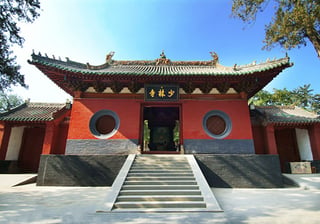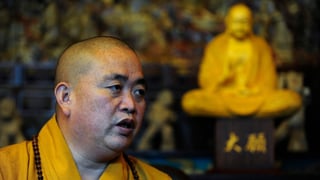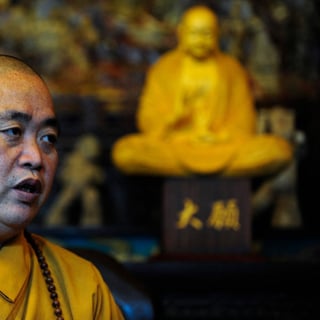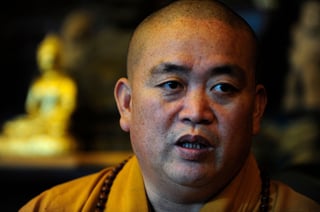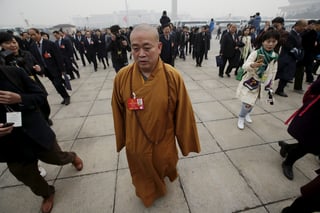Shaolin Monastery (少林寺 Shàolínsì), also known as Shaolin Temple, is a renowned monastic institution recognized as the birthplace of Chan Buddhism and the cradle of Shaolin Kung Fu. It is located at the foot of Wuru Peak of the Songshan mountain range in Dengfeng County, Henan Province, China. The name reflects its location in the ancient grove (林 lín) of Mount Shaoshi, in the hinterland of the Songshan mountains. Mount Song occupied a prominent position among Chinese sacred mountains as early as the 1st century BC, when it was proclaimed one of the Five Holy Peaks (五岳 wǔyuè). It is located some 48 km (30 mi) southeast of Luoyang, the former capital of the Northern Wei Dynasty (386–534), and 72 km (45 mi) southwest of Zhengzhou, the modern capital of Henan Province. As the first Shaolin abbot, Batuo devoted himself to translating Buddhist scriptures and to preaching doctrines to hundreds of his followers. According to legend, Bodhidharma, the 28th patriarch of Mahayana Buddhism in India, arrived at the Shaolin Temple in 527. He spent nine years meditating in a cave of the Wuru Peak and initiated the Chinese Chan tradition at the Shaolin Temple. Thereafter, Bodhidharma was honored as the first patriarch of Chan Buddhism. The Temple's historical architectural complex, standing out for its great aesthetic value and its profound cultural connotations, has been inscribed in the UNESCO World Heritage List. Apart from its contribution to the development of Chinese Buddhism, as well as for its historical, cultural, and artistic heritage, the temple is famous for its martial arts tradition. Shaolin monks have been devoted to research, creation, and continuous development and perfecting of Shaolin kung fu. The main pillars of Shaolin culture are Chan Buddhism (禅 Chán), martial arts (武 wǔ), Buddhist art (艺 yì), and traditional Chinese medicine (医 yī). This cultural heritage, still constituting the daily temple life, is representative of Chinese civilization. A large number of celebrities, political figures, eminent monks, Buddhist disciples, and many other people, come to the temple to visit, make pilgrimages, and hold cultural exchanges. In addition, owing to the work of official Shaolin overseas cultural centers and foreign disciples, Shaolin culture has spread around the world as a distinctive symbol of Chinese culture and a means of foreign cultural exchange. From Wikipedia
